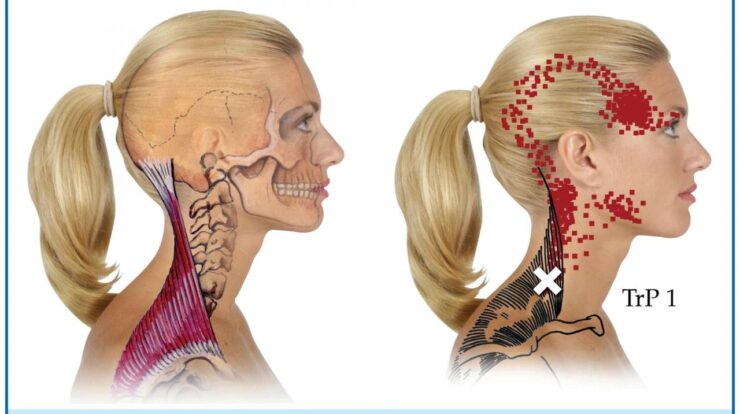
How to handle his snake yumi sin and fit kitty – Embark on a captivating journey into the realm of snake handling, discovering the secrets to mastering the art of caring for your serpentine companion, Yumi Sin, and ensuring their well-being. This comprehensive guide will equip you with the knowledge and techniques to handle your snake confidently and provide them with a thriving environment.
Techniques for Handling a Snake in Combat

Properly handling a snake in combat is crucial for safety and success. It requires a combination of skill, precision, and courage.
The key to effective snake handling lies in maintaining control over the snake’s head and tail. This prevents the snake from biting or constricting, while also allowing you to maneuver it safely.
Handling a snake can be tricky, but with the right techniques, you can do it safely. First, approach the snake calmly and avoid making any sudden movements. Gently lift the snake from the middle of its body, supporting its weight with your other hand.
If the snake tries to bite, don’t panic. Simply release it and try again later. For more detailed instructions on how to handle a snake, check out this helpful guide: how to handle his snake yumi sin and fit kitty .
Grip and Positioning
- Use a firm grip:Hold the snake firmly, but avoid crushing it.
- Position the snake’s head:Keep the snake’s head close to your body, pointing away from you.
- Control the tail:Grasp the snake’s tail with your other hand, preventing it from swinging.
Step-by-Step Restraint
- Approach the snake cautiously:Avoid sudden movements that could startle the snake.
- Secure the head:Use a snake hook or your hand to gently pin the snake’s head to the ground.
- Coil the snake:Slowly coil the snake’s body around your arm, keeping its head secure.
- Secure the tail:Once the snake is coiled, secure its tail by wrapping it around your other arm or using a rope.
- Transport the snake:Place the restrained snake in a secure container for transport.
- Coiled Position:When a snake coils its body tightly, it’s usually a defensive posture, indicating that it feels threatened.
- Head Raised:If a snake raises its head and stares at you, it’s a sign of curiosity or potential aggression.
- Tongue Flicking:Snakes use their tongues to gather information about their surroundings. Rapid tongue flicking indicates that the snake is alert and exploring its environment.
- Lateral Undulation:Snakes use this side-to-side movement to move efficiently. However, it can also be a sign of aggression if accompanied by other defensive behaviors.
- Hissing:Hissing is a common warning sound produced by snakes. It’s a sign that the snake feels threatened and is ready to defend itself.
- Rattling:Rattlesnakes use their specialized tail segments to produce a rattling sound when they feel threatened.
- Grunting:Some snakes, like hognose snakes, produce a grunting sound when they’re feeling defensive.
-
-*Size
The enclosure should be large enough to provide the snake with ample space for movement, exploration, and thermoregulation.
Strategies for Feeding a Snake

Snakes, as carnivorous reptiles, require a diet primarily consisting of live or frozen-thawed prey. The frequency and quantity of feeding vary depending on the species, size, and age of the snake. It’s crucial to establish a consistent feeding schedule to ensure the snake’s optimal health and well-being.
Choosing the Appropriate Prey, How to handle his snake yumi sin and fit kitty
The size and type of prey offered to a snake should be carefully considered. Generally, the prey should be no wider than the thickest part of the snake’s body. Live prey, such as rodents, birds, or fish, can provide enrichment and stimulate the snake’s natural hunting instincts.
However, it’s essential to ensure the prey is appropriately sized and not a threat to the snake. Frozen-thawed prey, on the other hand, is a safer and more convenient option, as it eliminates the risk of injury to the snake or escape of live prey.
Now that you’ve learned how to handle his snake Yumi Sin and fit kitty, it’s time to focus on increasing your insurance agent productivity. Check out this helpful guide on how to increase insurance agent productivity to learn how to boost your sales and grow your business.
Once you’ve mastered these techniques, you can return to your furry friend and give them the attention they deserve.
Feeding Techniques
When feeding live prey, it’s important to supervise the interaction closely to prevent any harm to either the snake or the prey. Frozen-thawed prey should be completely thawed and warmed to room temperature before offering it to the snake. This makes it easier for the snake to digest and reduces the risk of regurgitation.
Handling his snake Yumi Sin and fit kitty can be challenging, but it’s essential to keep them both healthy and happy. However, if you’re an insurance agent, you may also be wondering how to increase your productivity. Fortunately, there are many resources available to help you with this, such as this article . By following the tips outlined in this article, you can learn how to handle his snake Yumi Sin and fit kitty effectively while also boosting your insurance agent productivity.
Understanding Snake Behavior: How To Handle His Snake Yumi Sin And Fit Kitty
Snakes are fascinating creatures with unique behaviors and body language. Understanding their behavior is essential for safe and effective handling. This knowledge helps us interpret their actions, anticipate their responses, and respect their boundaries.
Observing a snake’s body language and vocalizations provides valuable insights into its state of mind. These cues can indicate whether a snake is defensive, curious, or ready to strike.
Body Language
Vocalizations
Respecting snake boundaries and avoiding aggressive behavior is crucial for both your safety and the well-being of the snake. Always approach snakes calmly and cautiously, and never attempt to handle a snake unless you’re properly trained and experienced.
Creating a Safe and Enriching Environment for Snakes
Snakes require a carefully designed and well-maintained enclosure to thrive in captivity. This includes providing them with a secure habitat that meets their physical and mental needs, as well as ensuring their safety and well-being.The size of the enclosure should be appropriate for the size and species of the snake, allowing for ample space for movement and exploration.
I’m sure handling your snake Yumi Sin and fit kitty can be quite the task. But if you’re looking for ways to increase your productivity as an insurance agent, check out this article on how to increase insurance agent productivity . With these tips, you’ll be able to handle Yumi Sin and fit kitty like a pro in no time!
The enclosure should be escape-proof, with secure locking mechanisms and no gaps or holes where the snake could escape. It should also be well-ventilated to ensure proper airflow and prevent the buildup of harmful gases.Within the enclosure, it is crucial to provide hiding places for the snake to feel secure and protected.
These can be in the form of caves, logs, or dense foliage. Climbing structures, such as branches or rocks, should also be included to allow the snake to exercise and explore its environment vertically.Mental stimulation is essential for the well-being of snakes.
This can be provided through enrichment activities, such as puzzle feeders that challenge the snake’s problem-solving abilities or interactive toys that encourage movement and interaction. A variety of substrate materials, such as aspen shavings or coconut fiber, can also provide sensory enrichment and allow the snake to burrow and explore.Regular
cleaning and maintenance of the enclosure are vital to ensure the snake’s health and well-being. This includes removing waste, cleaning water bowls, and disinfecting the enclosure regularly. By providing a safe and enriching environment, snake owners can help ensure the health and happiness of their reptilian companions.
Enclosure Design
When designing a snake enclosure, there are several key factors to consider:
-*Security
The enclosure should be escape-proof, with secure locking mechanisms and no gaps or holes where the snake could escape.
-*Ventilation
The enclosure should be well-ventilated to ensure proper airflow and prevent the buildup of harmful gases.
-*Hiding places
The enclosure should provide hiding places for the snake to feel secure and protected.
-*Climbing structures
Climbing structures, such as branches or rocks, should be included to allow the snake to exercise and explore its environment vertically.
-*Substrate
A variety of substrate materials, such as aspen shavings or coconut fiber, can provide sensory enrichment and allow the snake to burrow and explore.
Ending Remarks

As you delve into the intricacies of snake handling, you’ll uncover a world of fascinating behaviors, essential healthcare practices, and enrichment activities that will deepen your bond with your scaly friend. Remember, patience, respect, and a genuine passion for these remarkable creatures are the keys to a harmonious and fulfilling relationship.
FAQ Explained
How often should I feed my snake?
Feeding frequency varies depending on the snake species and age. Consult a veterinarian or reputable reptile care source for specific recommendations.
What type of prey should I feed my snake?
Live prey is generally not recommended due to potential injury to the snake. Frozen-thawed rodents are a safe and convenient alternative.
How can I assist my snake with shedding?
Provide a humid environment and gently soak your snake in lukewarm water to aid in shedding. Avoid pulling or peeling the shed, as this can damage the snake’s skin.





